Stories from the Hood, Part Two – Present Times
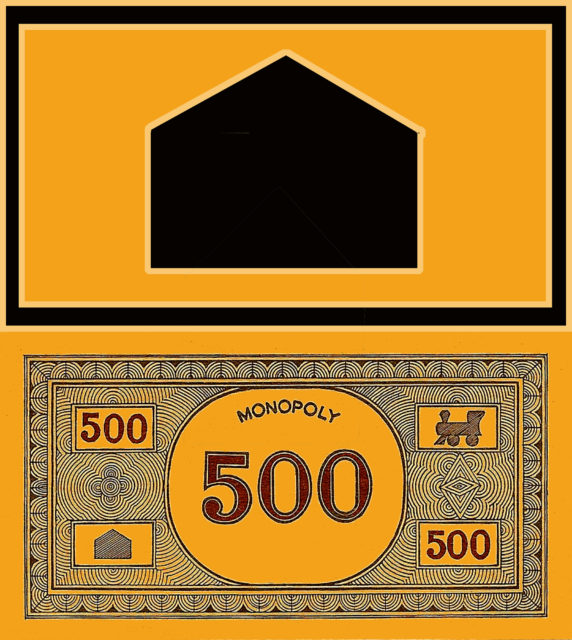
Stories from the Hood
Present Times
Chapter Two
When I moved here in the early 1990’s, north Denver was not the hot developer’s dream that it is today. Remnants of the Chicano gangs were still around, marking their territories with graffiti at night. My high profile, corner house was a perfect graffiti target and neighborhood crime was much higher. Being street wise and using common sense kept most people relatively safe. It was life in an inner-city.
The Denver Police Department crime map was very helpful to monitor the activity of various crimes in the neighborhood each week. The crime map had symbols for exactly where unlawful acts were enacted with a variety of graphics depicting car thefts, car break-ins, home break-ins, armed robberies, drug busts, rape, and so forth. I particularly noted the proximity of the car icons to gauge the safety of the street parking around me.
The police adamantly advise to always lock your car and never leave valuables inside. But when a neighbor reported having her windows broken, in order to steal a half-eaten box of Lucky Charms cereal from the back seat, I decided to try a different approach. After having my car windows broken twice, my radio ripped out and even my cassette tape of the Bulgarian Women’s Choir stolen, I came up with the brilliant idea to not lock my car. That way I could avoid the hassle of replacing more broken car windows. Leaving my car unlocked didn’t seem to matter much though. One night someone smashed my back window with a baseball bat just for the thrill of it and didn’t even enter the car. I noticed more broken car windows down the street and imagined someone walking down the street with a baseball bat smashing a window every block when they felt the adrenaline level go down, like a scene out of Kubrick’s 1971 movie A Clockwork Orange.
At one point in broad daylight, I just happened to look out my second floor window to observe someone breaking into a car across the street and stealing a black leather jacket from the backseat. I realized that it literally takes only seconds for these well-executed acts to be perpetrated. I then started locking my car again for an unforeseen reason. Early one morning, I was on my way to a job and walked out to my car. I got in, started the car, looked in the rear-view mirror, and was startled to realize that there was an unconscious body in the back seat. To my relief it was only a homeless person passed out for the night in the shelter of my car. I woke him by yelling, “Hey man you want a lift somewhere or do you just want to get out?” He then proceeded to get out and I gave him one of my breakfast muffins. However, change was in the air and a new era was about to begin for this neighborhood.
Just around the corner, a thriving urban-arts scene developed out of the visionary real estate investments of artists Reed Weimer and Chandler Romeo. Later these two would receive the Mayor’s Award for Excellence in the Arts for what came to pass and the street would be deemed the Navajo Street Arts District. In 1982, the scene at this art oasis centered around the germinal Pirate Art Gallery (later to be followed by four other art galleries). It was an exciting moment in time when Pirate had an opening; in Pirate’s heyday, these art happenings flowed with alcohol into the wee hours and drew crowds of the avant-garde.
Performance art was in vogue and out of the Pirate Gallery came a performance cooperative phenomenon known as the “Denver Mudmen” (which included women). In 1982, the group was spearheaded by Mark Antobus, an artist, tiling contractor, businessman and Hindu monk (now living in India). The Mudmen consisted of some 20+ participants per appearance and the troupe had some 60-100 initiates over its lifespan.
Inspired by the New Guinea mudmen photographs of Irving Penn, they made paper maché mud masks, drums out of such items as a smashed hub cap, a five-gallon plastic water bottle, a gutted transistor radio shell; they then played them with sticks and branches. The mud people de-robed down to skimpy loincloths. Their clay-smeared bodies were adorned with leaves and dried plants. With mudded hair and mudded hand-prints on their bodies, they made fashion statements with such accoutrements as a muddy plastic cow dangling from a waist thong, baby doll heads, and necklaces of charcoal briquettes, plastic fingers and drinking straws. Any place that there was going to be a crowd of people was a sitting duck for the mud people to spontaneously manifest. They would even ride city buses to get to where they were going. Appearing about three or four times a year, they moved like a forest tribe lost in the city, with screams, yells, trills, and an incessant percussive beat. You knew when the mudmen were approaching by the sound of the drums getting louder and louder. They had choreographed movements and handed out slips of paper with such phrases as: It’s your life ; As ever it was, it always will be ; The emperor is naked ; We have nothing better to do ; and End the joke, die for your art. One mudman had a fashion magazine he would open to an ad for Chanel No. 5 and then snap it shut again. There was a tendency in onlookers minds to think, “What does it all mean?” Antobus explained that he was dedicated to re-paganizing the modern world.

The Mudpeople Cometh photos by Mark Sink
“The mudmen are not only from our past, but also from our future, where we may find ourselves in a post-nuclear survival age. Mudmen live in harmony with time and place; they build nothing, destroy nothing, and leave nothing behind. You see, everything that is going to happen will do so because light returns to its fount, though everything that has already happened hasn’t yet begun.” – Wolfgang Frederick Shine
Sandwiched between the Navajo Street art galleries, was a derelict, boarded-up and abandoned old Italian-era movie theatre. The theatre premiered such film classics as The Wizard of Oz in 1939 and Gone With the Wind in 1940. In modern times, the facade was so hidden and non-descript that no one even realized what its closed doors entombed. This run-down treasure tomb had been sealed and forgotten for many a decade. In 1992, the property was purchased by Reed Weimer and Chandler Romeo and established as a non-profit organization to become a part of the thriving arts scene that surrounded it. When it reopened, it was restored into an experimental performing arts theatre complete with the original tin repousé ceiling and seats. The seating capacity is 160 with 185 at maximum capacity. Since reopening, the theatre has undergone the huge project of replacing its seats three times. The present red-velvet seats came from The Wheeler Opera House in Aspen.
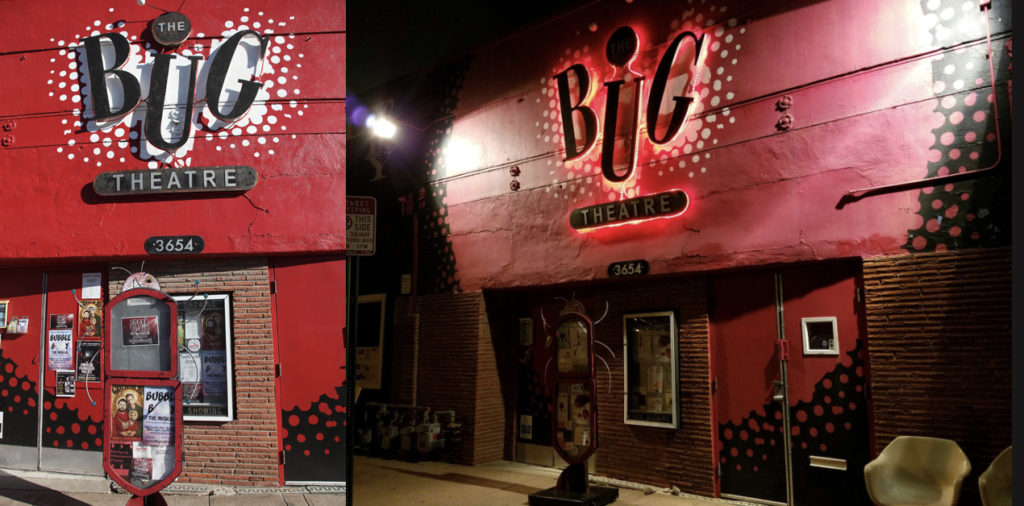
The Bug is one of those historic buildings that’s been reported to have a resident ghost. In the old days, the adjacent corner building in the complex was a drug store. One day the drug store was robbed and the owner was cut in half by the powerful blast of the burglar’s shotgun. The two half-ghosts of this guy easily passes through the wall into The Bug as it endlessly roams and relives its tragic history. It is a spookie and dark building that easily sparks the imagination. When people are alone in there at night, they have heard very weird and chilling sounds coming from the basement. Some have dismissed these sounds as the moans of a very old heating system, but when you are alone with these moans, what you feel tends to be stronger than what you think you know.
The theatre was built in 1911 and was originally called The Ideal Theatre. It functioned as a Nickelodeon, performance/vaudeville theatre, silent-movie theatre, and later a talkie-movie theatre. Back in time, the seats were reported to have lice and at night the bugs came in to eat all the candy off the floor. So did the theatre earn its nickname, The Bug House. Presently, the theatre is called “The Bug” after this original, Italian-era, nick-name. The bugs are gone but every so often people stop by to reminisce the joy they had as children coming to see talkie movies there.
In 1998, Alex Weimer finished his degree in theatre and started working at The Bug as technical director. Over the years, his position evolved to artistic director, executive director, lighting technician, manager, and custodian. During our interview, his ear caught the sound of dripping water and he ended up mopping the floor and shoveling snow off the roof to fix the leak before the performance opened that night. Alex is a man who wears many hats and whose passion has been the driving force behind this theatre for some 22 years.
The Bug has many faces. It functions as a gym for the arts to work out experimental ideas, including performance art. The Bug hosts quite a bit of stand-up comedy and theatre that is not your typical Shakespeare or Beckett. The Equinox Theatre Company has been the venue’s resident theatre company since 2009 and they produce five, month-long productions per year. Their most successful production was the resident company’s production of Evil Dead, the Musical. All seats for all shows, all month, were completely sold out. The same was true of The Bug’s production of Cannibal, the Musical. Each year The Bug hosts a number of film festivals as well as other film events with the independent film community. Once a month, they host an event called Freak Train. This open stage, open mike event has five-minute slots that acts sign up for at 7:00 and the show begins at 8:00. Quite a few people who performed at The Bug as actors, musicians, and comedians have gone on to fame, including the musical acts Jeff Buckly and The Tiger Lillies, to name a few.
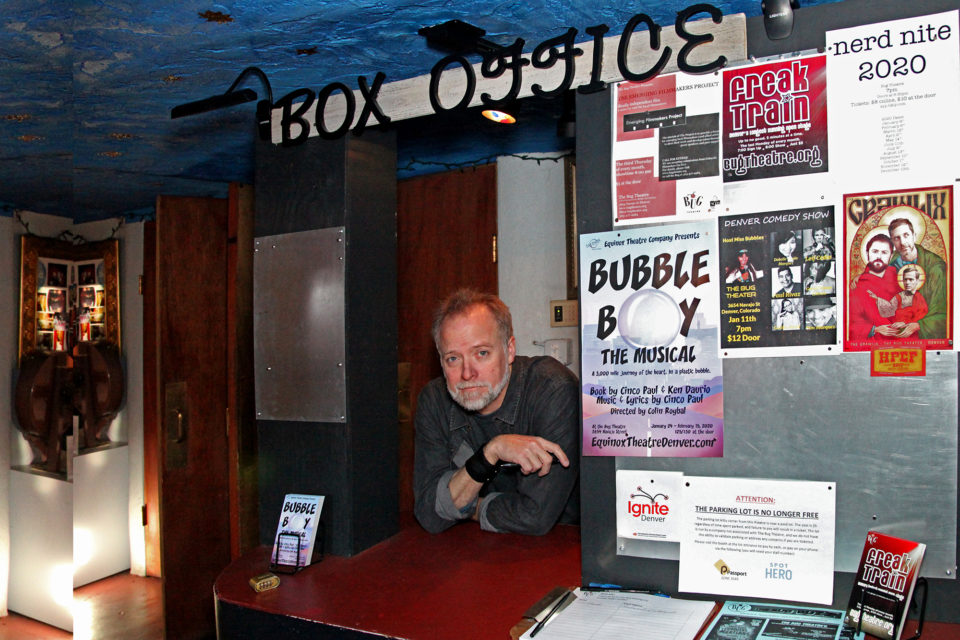
The Bug is a part of the thriving stand-up comedy scene in Denver. Don Becker was a comedian and playwright who performed his guerrilla theatre regularly at The Bug. His most well-known play is Lucifer Tonight. He was a rather weird, edgy, and delusional character. At one time, he was Denver’s top stand-up comedian, along with Roseanne Barr (of the sitcom Roseanne fame). Becker even wrote material for Barr. Becker enjoyed mind altering substances and probably didn’t take his bi-polar meds often enough. One night in 1986, he was having a conversation with God and was told that he must make a sacrifice. It would have been easy to just ex-out a goat or chicken, which usually covers appeasement, but this time God wanted Becker to sacrifice his arms. So he went down to the train tracks and laid his arms on the tracks beneath a passing train. He lost one arm and several fingers on his remaining hand. He sometimes told his audience that he was just feeling fat and tried the Amtrack weight loss program. After he died in 2008, his estate bequeathed his prosthetic arm to The Bug. His arm is now in a glass case, prominently displayed above the entry into one of The Bug’s gender-neutral restrooms.
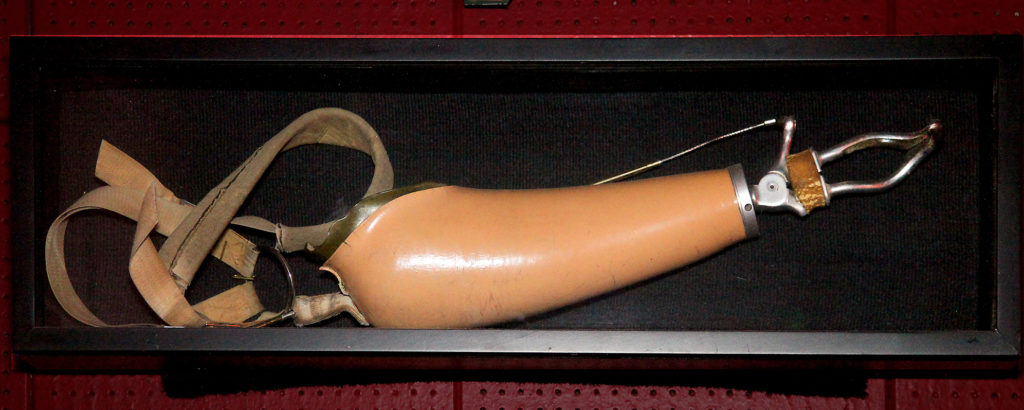
Almost 40 years later, the galleries are gone and a contemporary fare restaurant replaces the historic Italian restaurant, Patsy’s, on the Navajo Street block. Pirate Art Gallery has moved but is still run by its original director, Phil Bender. And as I write, another original building on that stretch has been scraped and the construction of a “boutique hostel” is rapidly underway. The Bug is now the only surviving artifact of bygone days on that block.
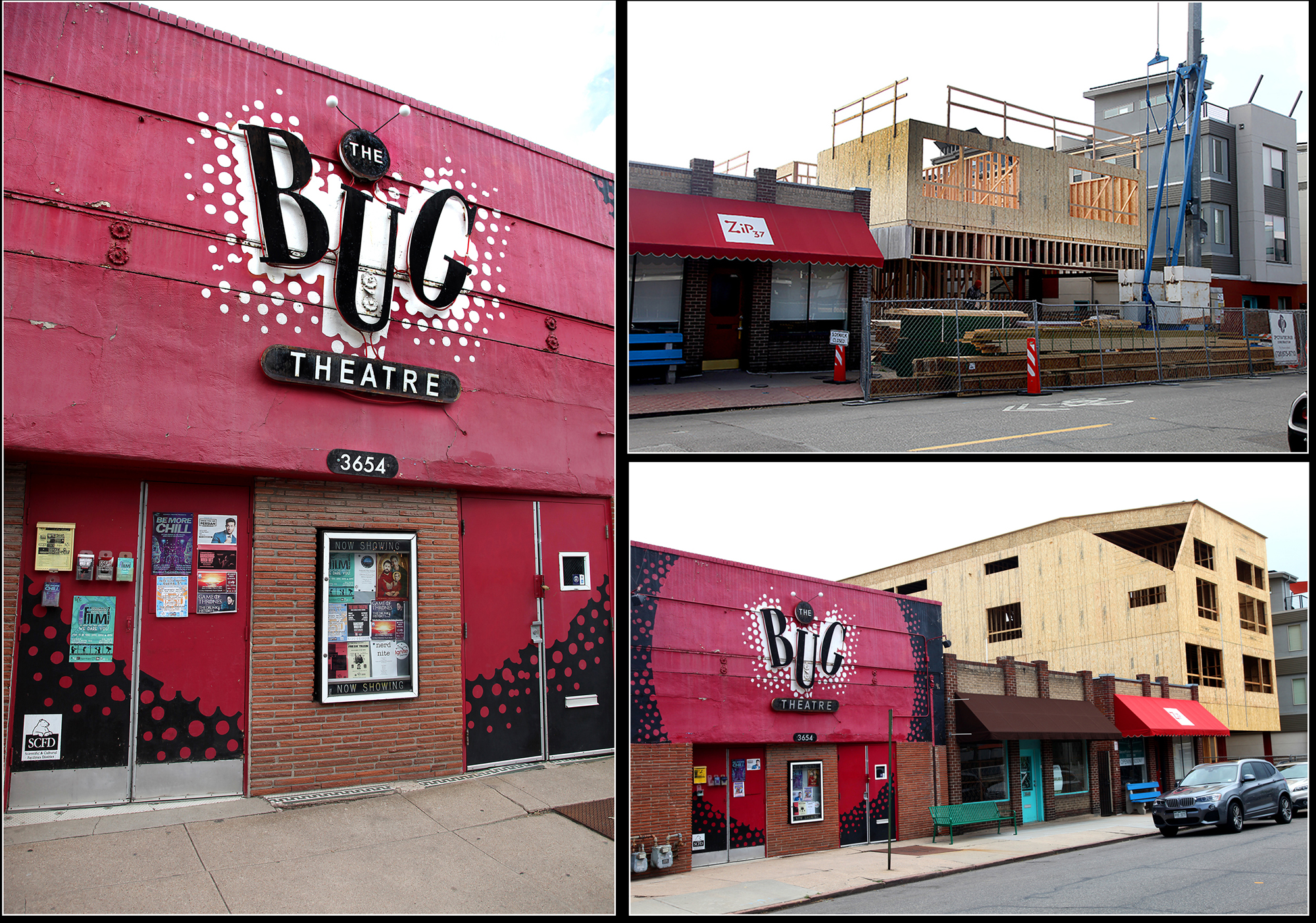
Having little to do with the $5-a-night, international hostels of my youth, this new “boutique hostel” is an example of where the neighborhood is headed. This 3-story, 17-room structure is part of a chain called Life House. It describes itself as “a hip, mid-century-meets-Western mansion, filled with low-slung furnishings and plush fabrics, fancy cocktails, and decorative succulents.” It will have its own restaurant, swanky bar, and outdoor patio, as well as king-size rooms and bunk-bed rooms with the cheapest private room going for around $150 a night. This chain is establishing itself all over the country in neighborhoods such as ours as it targets a market somewhere between a high-end hotel and an air-b-and-b. It’s concept is to be seen as a smaller, more intimate style hotel.
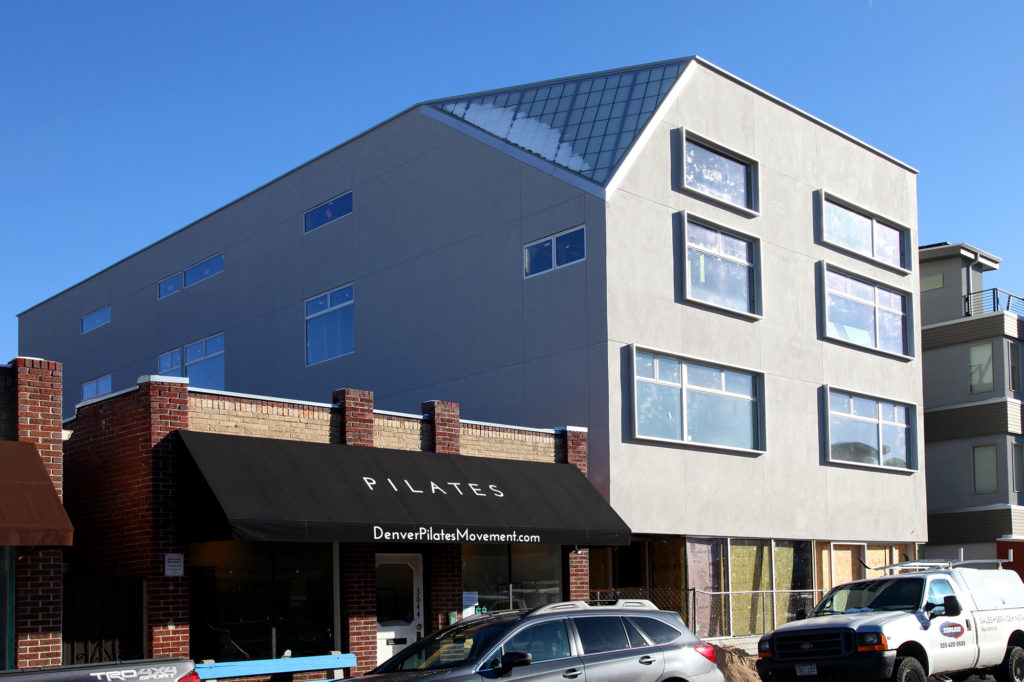
Local residents started to feel the sweeping transformation of north Denver about twenty years ago. Since then, northern Denver has undergone tremendous and unimaginable development, changing the face of the neighborhood’s architecture and demographics. With this continuous, non-stop, rapid metamorphic leap into the future came many coffee shops, modern townhouses, massive apartment complexes, wine shops, Pilates, bike shops, beauty salons, trendy restaurants, sushi, gentrification, and with it all, a soaring rise in real estate value and property tax. If the new city taxes haven’t forced many longtime residents out, the lure of daily purchase offers by the developers has. History has been pushed out to make room for the new and affluent. Lower Highlands now goes by the cute and trendy name “LoHi”and we are reminded that establishments that seem to have been around forever are not eternal. The massive area that was once Olinger’s Mortuary is now a complex of upscale restaurants, the name of one eating establishment plays on the old mortuary name. The Olinger’s Mortuary sign still towers high above, although it no longer processes bodies, only animal meat and vegetables. At night the “O” on this historic neon sign disappears into the fashionable slogan “Linger’s – Denver’s finest eatuary”. The mortuary ice house, that once held bodies, has become an ice cream parlor, with the bodies lined down the sidewalk on hot days.
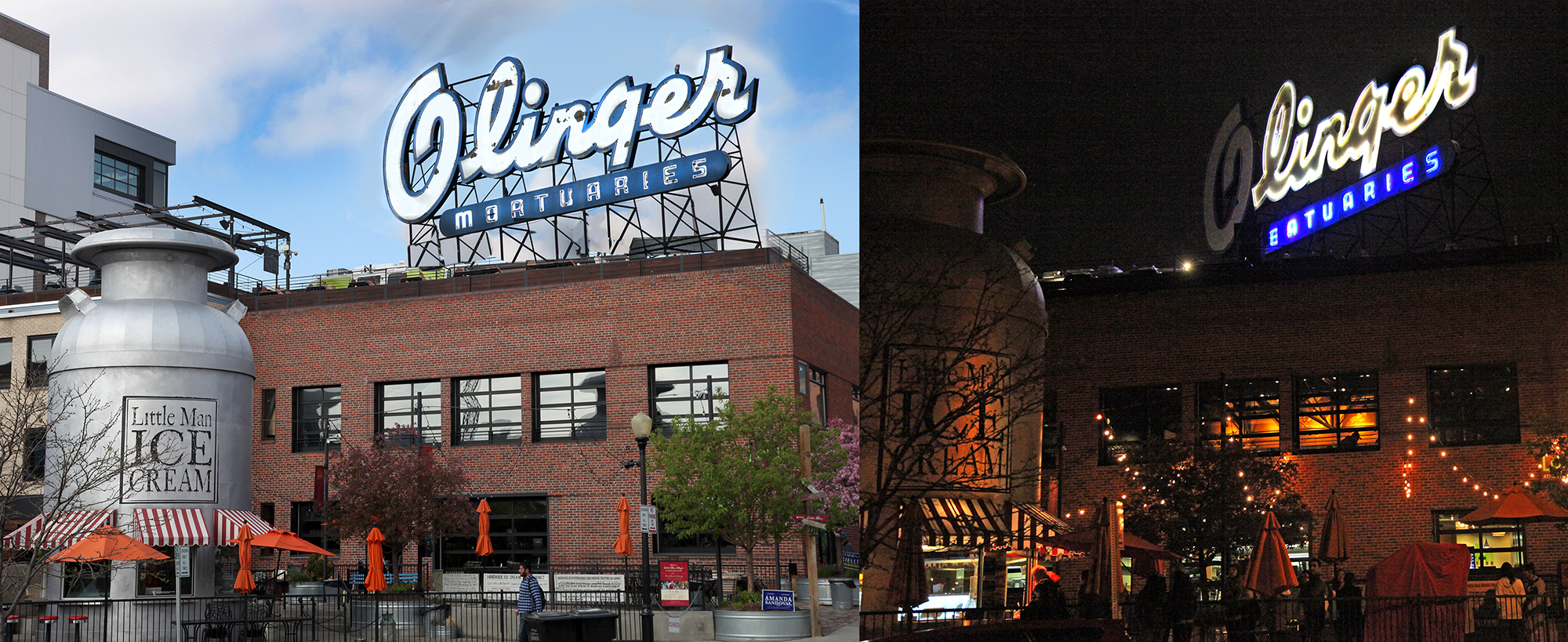
The diverse character of the neighborhood is an inter-woven mix of its cultural history and a contemporary aesthetic. This weave gives it a cosmopolitan, hip air, full of life and visual character that everyone living here thrives on. Some view the recent changes as an erosion to the historical character of the hood. The new, often tacky and hastily built architecture (reminiscent of some neo-faux-modernist movement) is juxtaposed to the elaborate old brick masonry structures and smaller houses of the past. The result is bizarrely eclectic. The term “gentrification” is frequently used in disdain to describe the transformation and usually meant in terms of the blandness of the color white replacing color with character. The transformation is anything but bland. The new populace is composed mostly of young millennials with double incomes, young families raising children, many young mothers pushing baby carriages for exercise, and older persons with good retirement income, many of which have moved back into the city from lives in rural areas. More than half of the original residents are still here and the ethnic history of the Chicanos and Italians will remain as long as the churches are around.


My favorite idiosyncratic juxtaposition of the old and the new includes the Hell’s Angels house. Presently within inches of this tiny house, a new upscale condo complex has just completed construction. The Hell’s Angels have been there since the early 1980’s and are holding their own amidst the changing world that engulfs them. The neighborhood has a rich biker history beginning in the 60’s and 70’s. We also have a biker shop on 38th street that hosts a well-attended biker festival in the adjacent park every year.
In November, there was some action on the news at the biker house when the police raided the place at four in the morning and made several arrests. Neighbors reported explosions described as “apocalyptic”. It was part of a larger sting raid in the area where 19 raids happened around the city and in Colorado Springs, simultaneously, resulting in 12 arrests. At this time, the police are not releasing details of the charges other to say that it was linked to serious organized crime. The US Department of Justice lists the Hell’s Angels as a gang involved in the “production and distribution of marijuana and methamphetamine.” My guess is that it may be something like that.
In 2001, the police raided the same place but ended up in court. For that raid, they did not have a warrant and ended up having to apologize with a $50,000 settlement to the Angels. This time they had a state issued warrant. Everyone around this house describes the Angels as being good neighbors but with events like this latest one, the developers are probably hovering like vultures over this property.

Featured here is the Keating/Luna neighborhood mural panel documenting the biker culture.
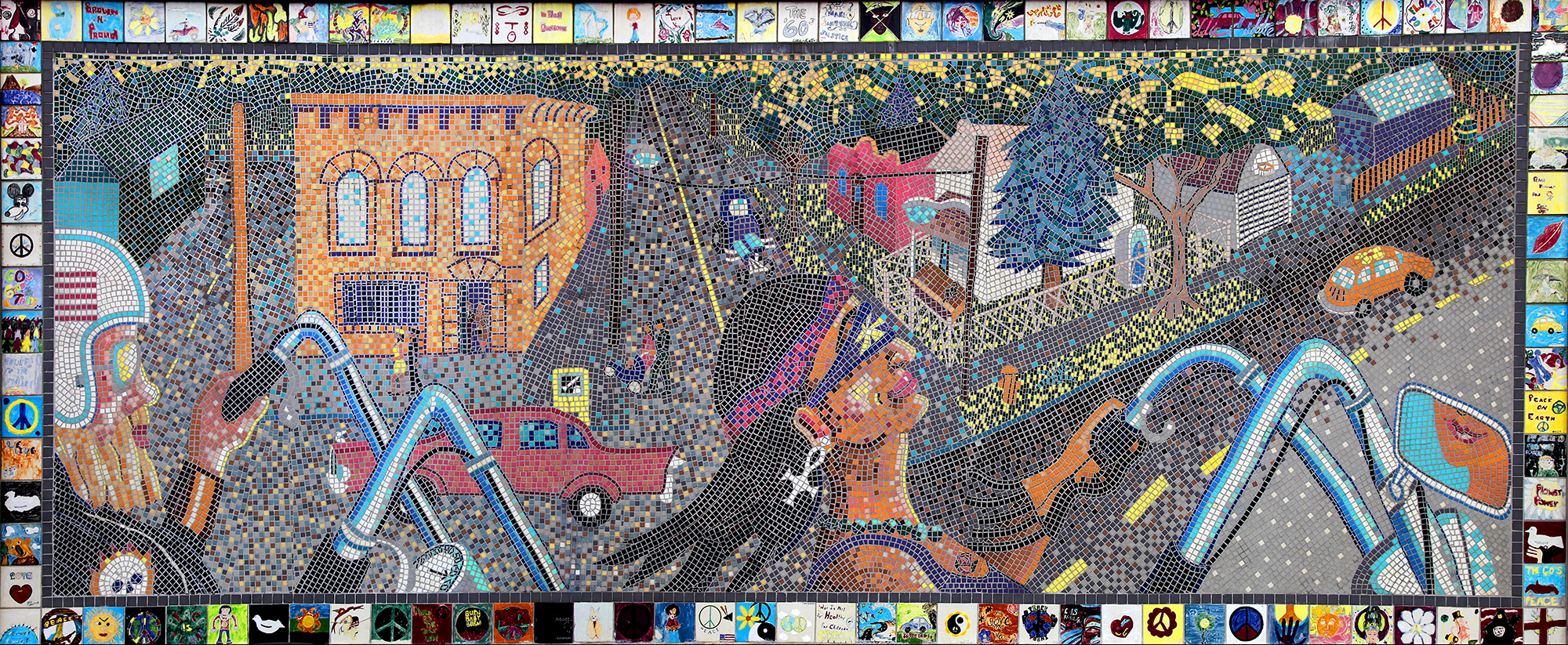
Directly across the street from the Angel’s house is where the historic Italian restaurant, Pagliacci’s used to sit. That little triangular block was scraped to build a massive, towering condo fortress with trendy, street level shops. The entire citadel is covered with white, laser-cut, anodized aluminum sheets which look to me like giant snowflake doilies. This concrete fortress was designed by Tres Birds Workshop architects and named “Lumina”. It is supposed to be a departure from all the “box” buildings going up everywhere in this neighborhood but is more like the biggest box of them all covered in holiday wrapping paper. The design on the screens that cover the building was inspired by 1,000-year-old sacred geometry found in middle Eastern floor patterns. It is supposed to be a symbol for infinity with the sacred patterns transforming this mausoleum-like building into a “living, breathing organism”. These designs are also supposed to tie into the Italian heritage of the North side with its “Mediterranean flair” paying homage in some obscure way to the demolished Pagliacci’s restaurant.
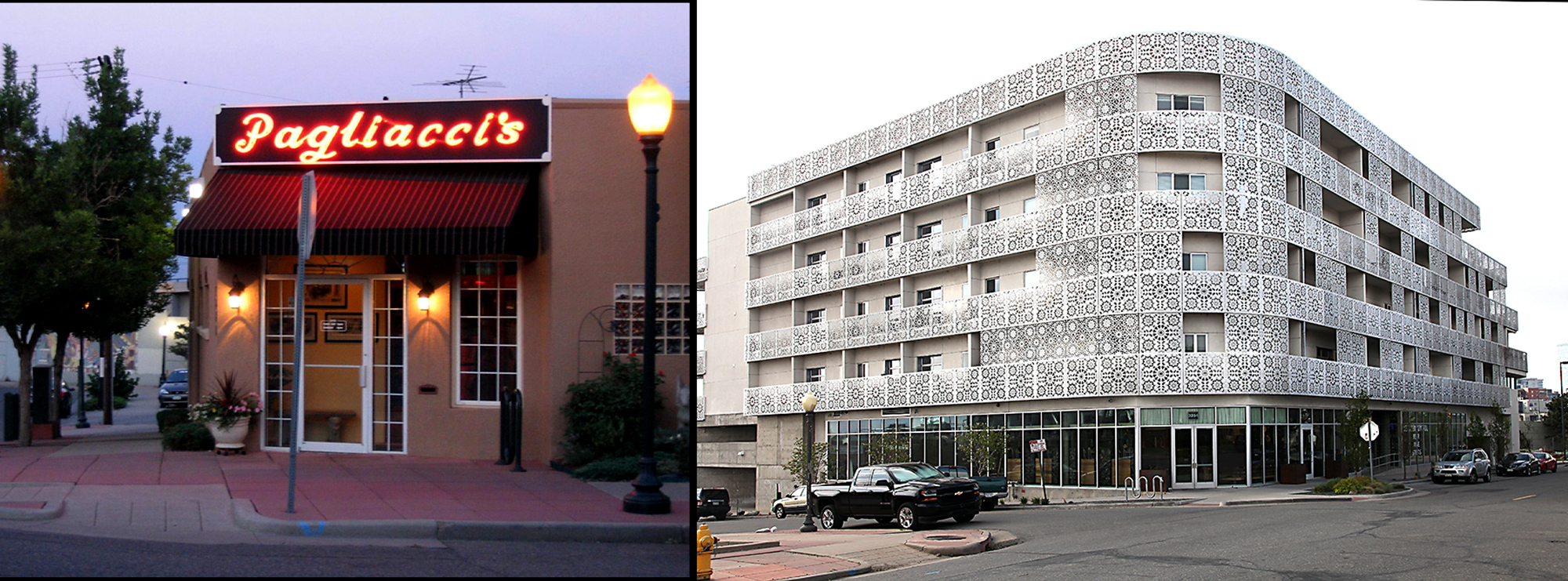
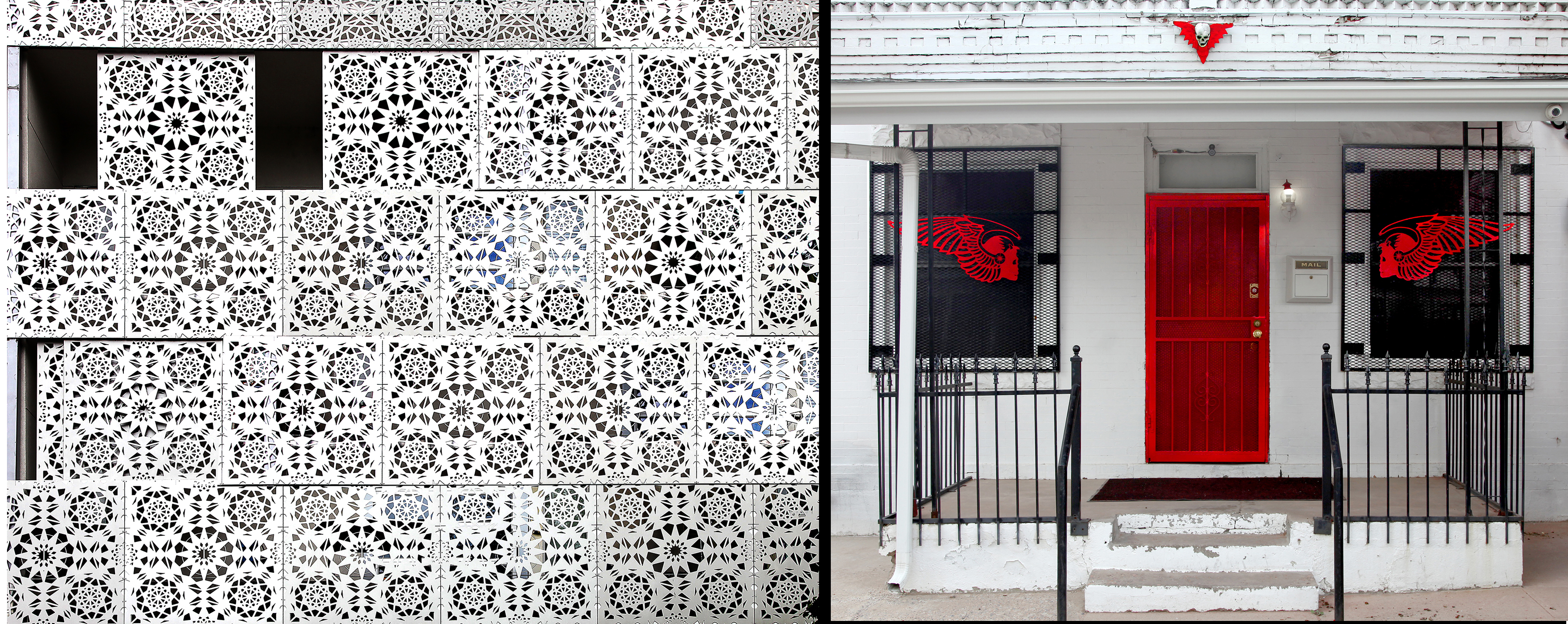

With the particular way this hood undergoes change lot-by-lot and block-by-block, the hood is reminiscent of a giant Monopoly board that the contractors (with all the Monopoly money) are playing. It is a daily phenomenon to see an older house scraped to dirt and dug out as a new structure soon appears in its place. What once existed will soon be forgotten. Life in LoHi is at the heart of this poignant ceramic artwork by Chandler Romeo, entitled “Evolution”.





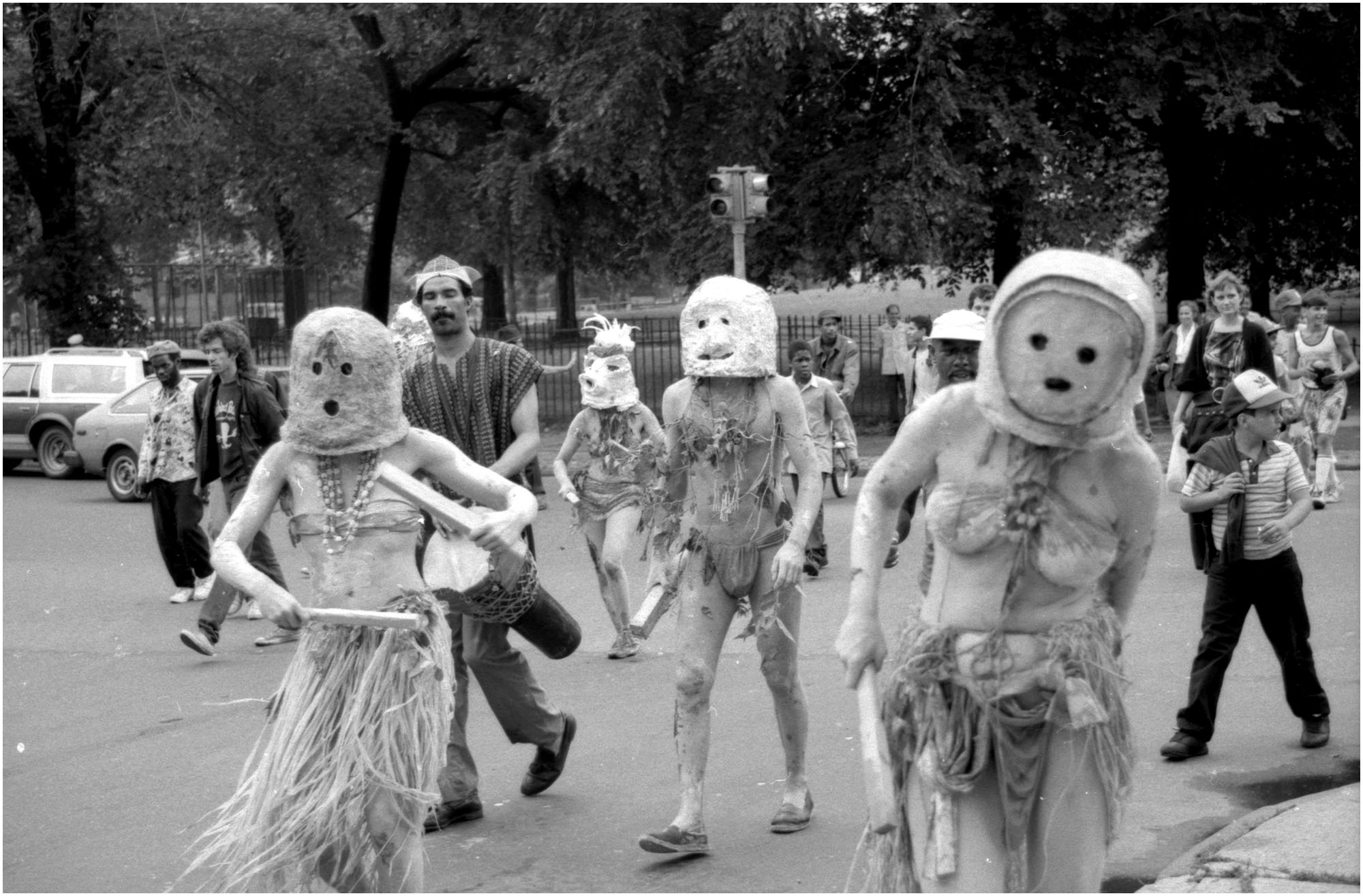

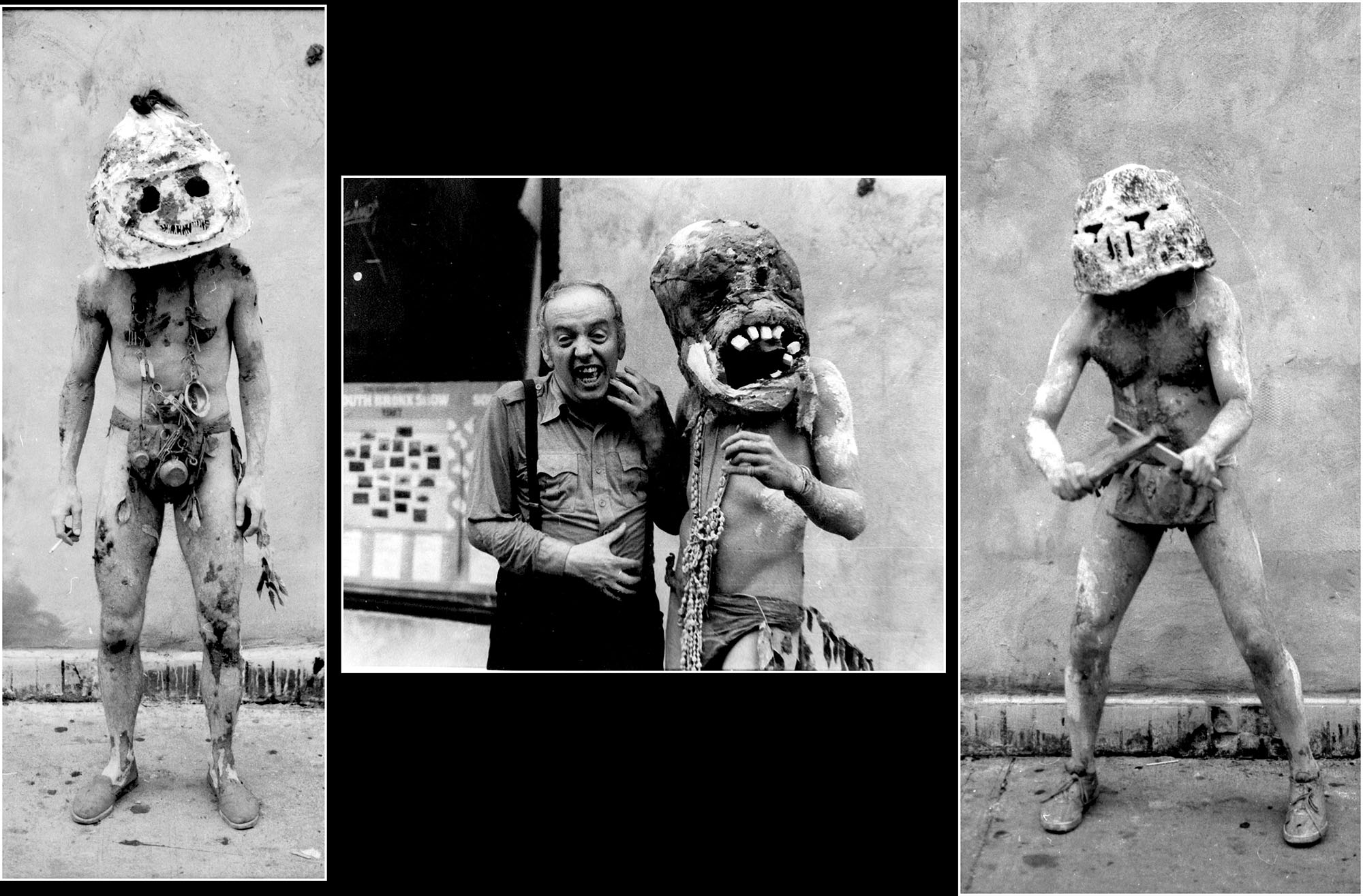
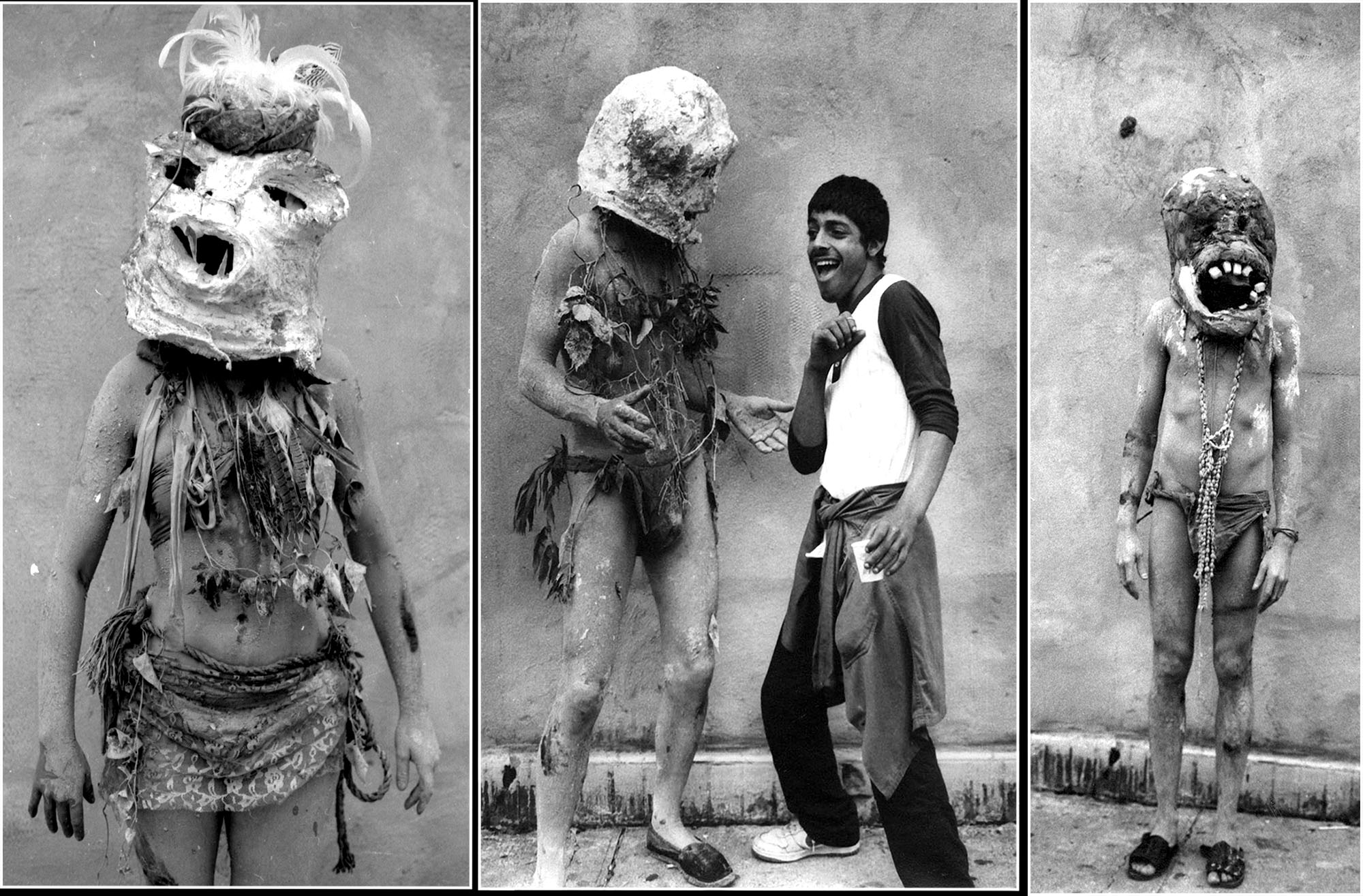

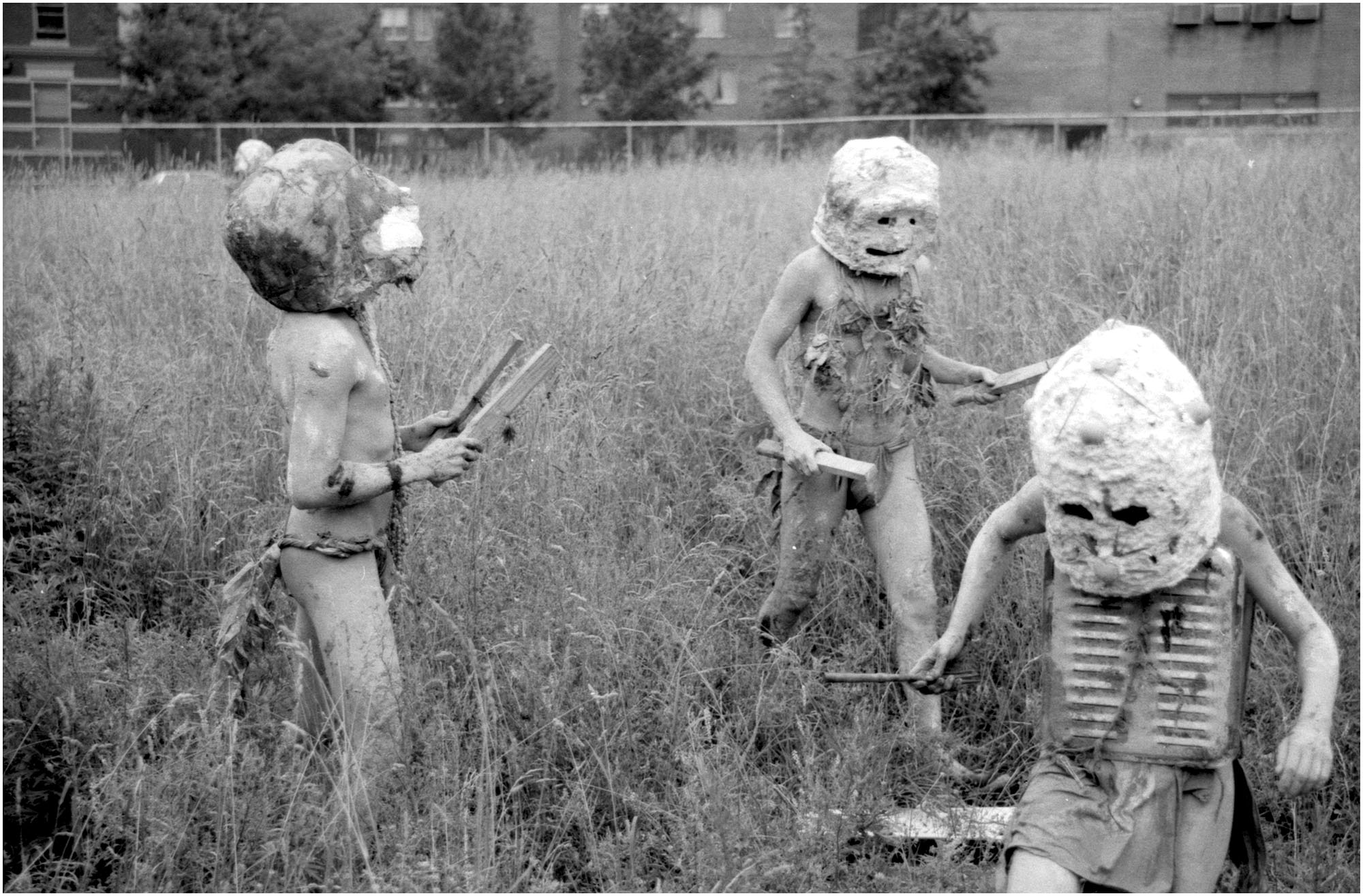
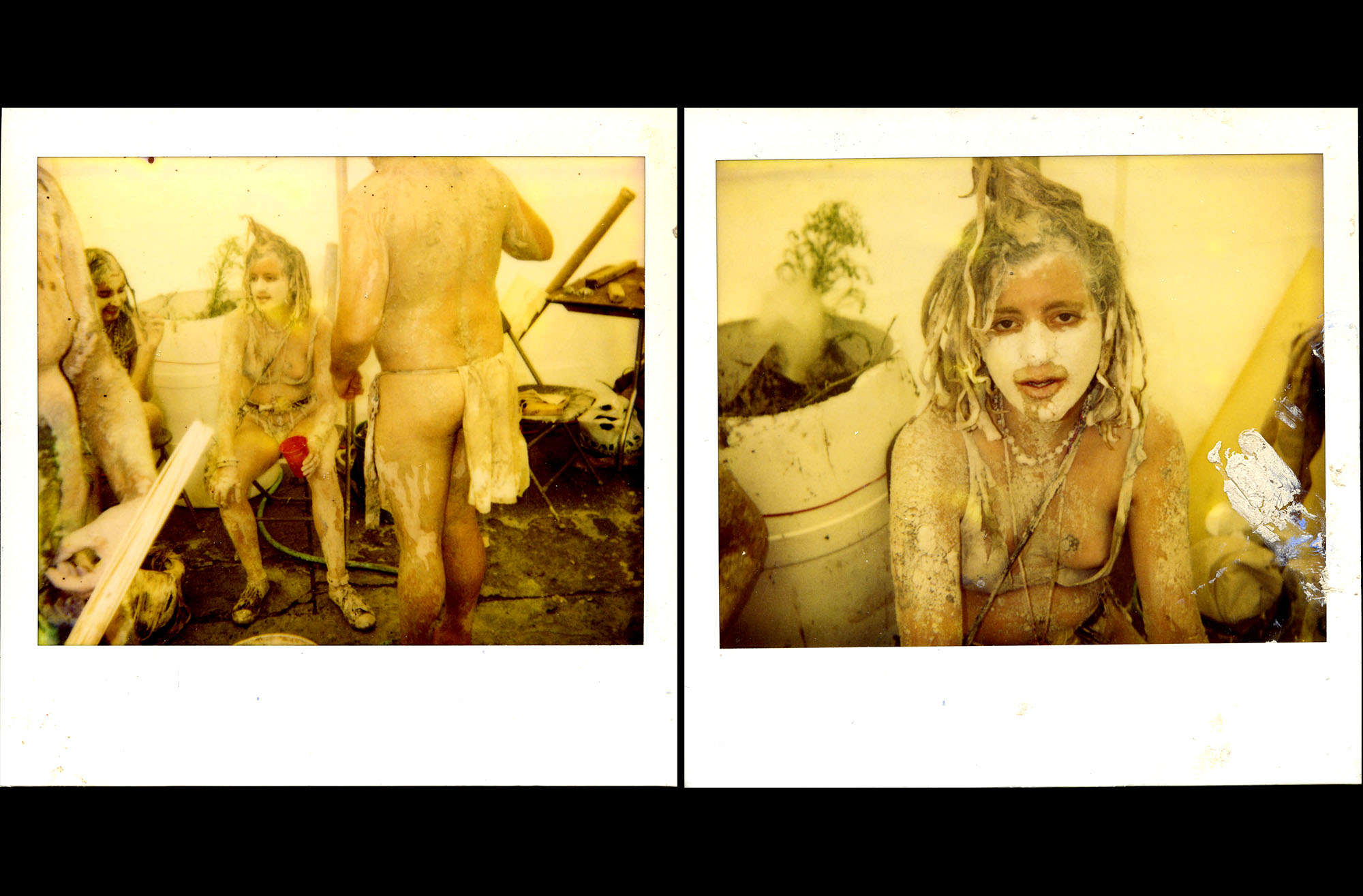
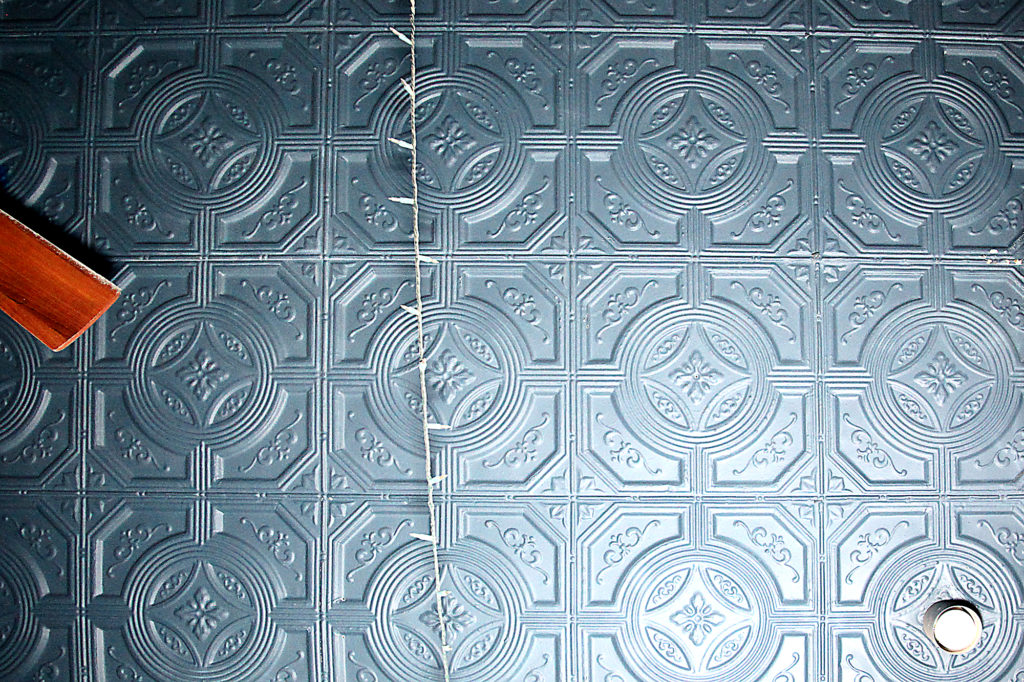
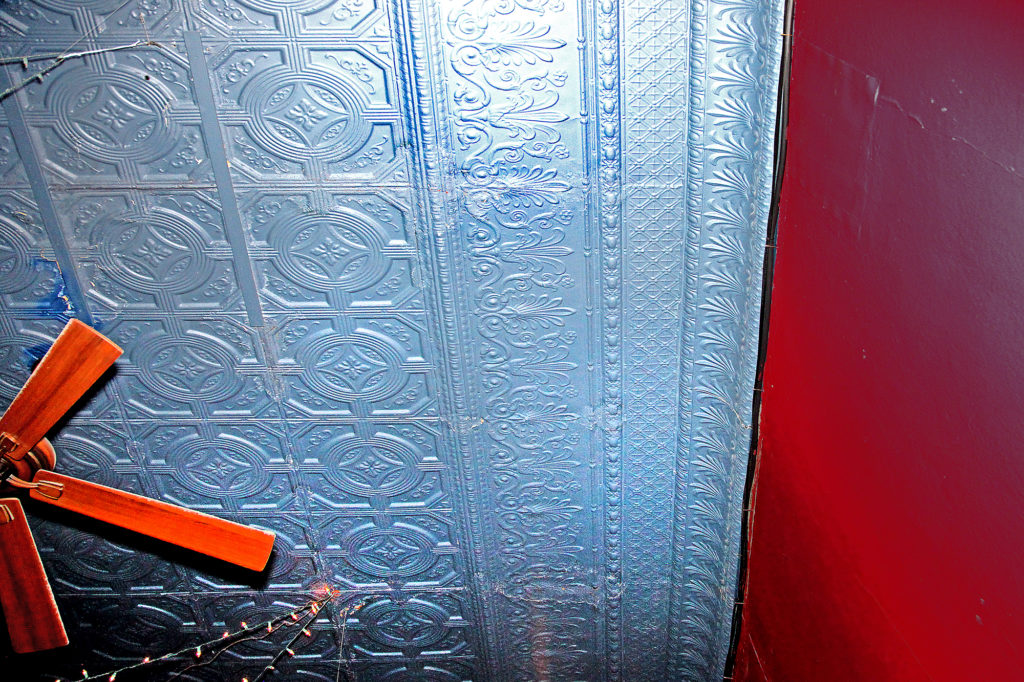
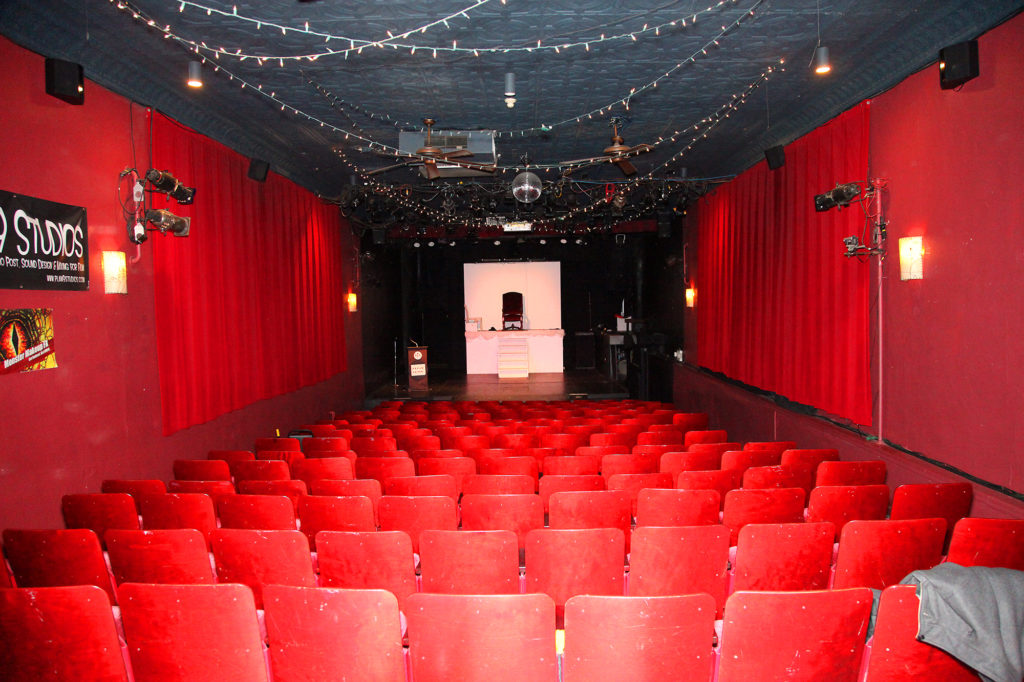
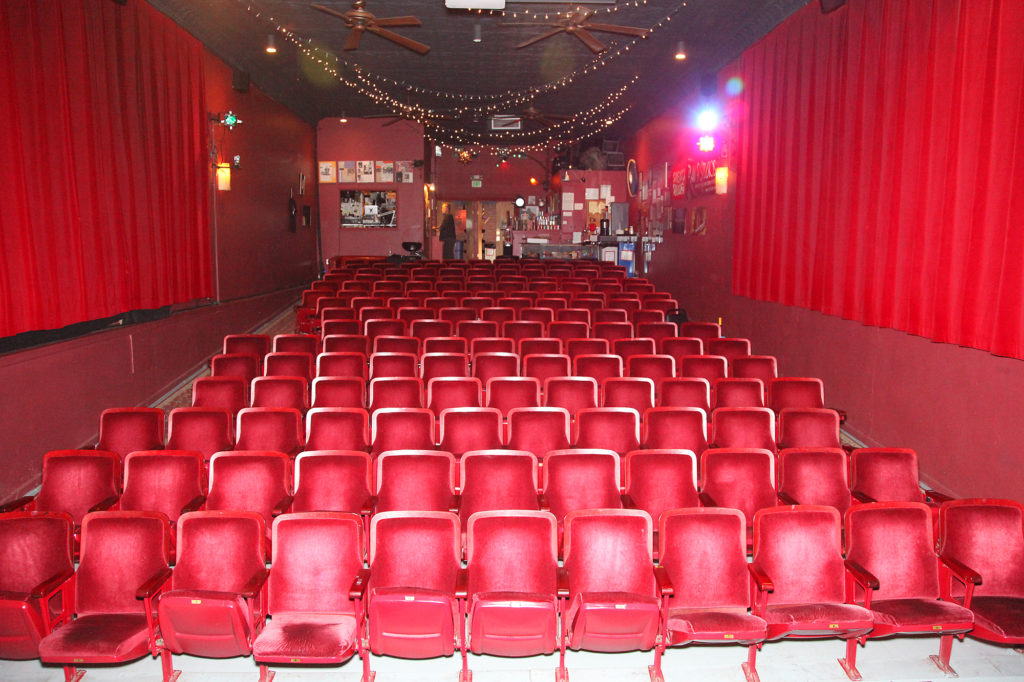
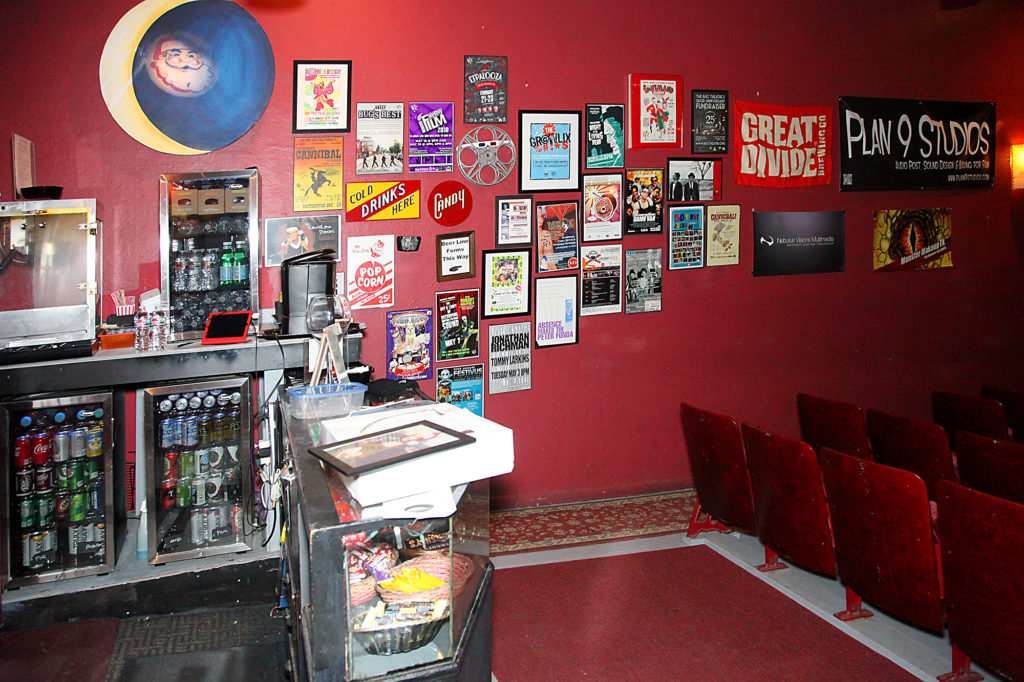
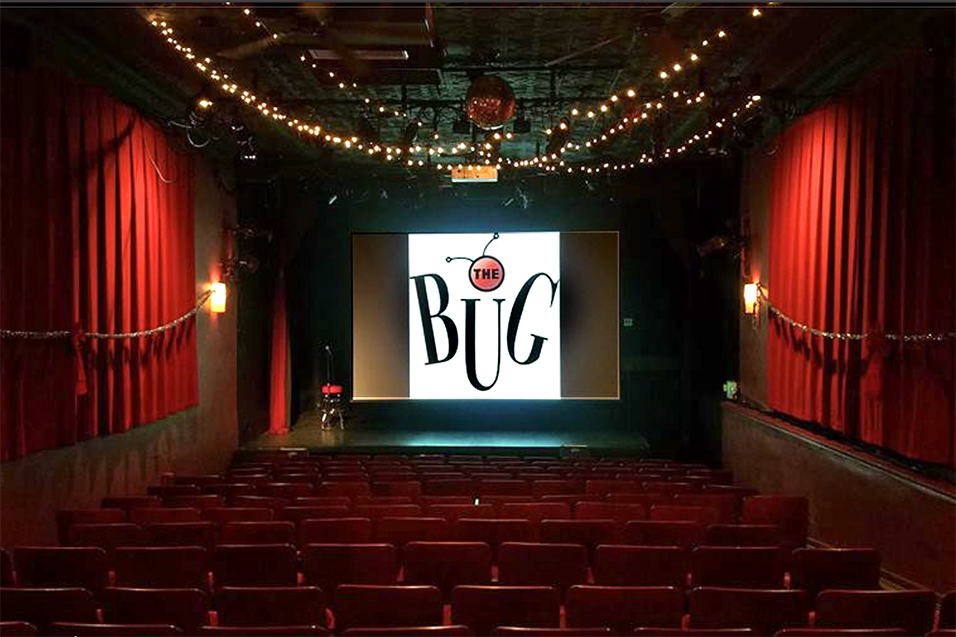
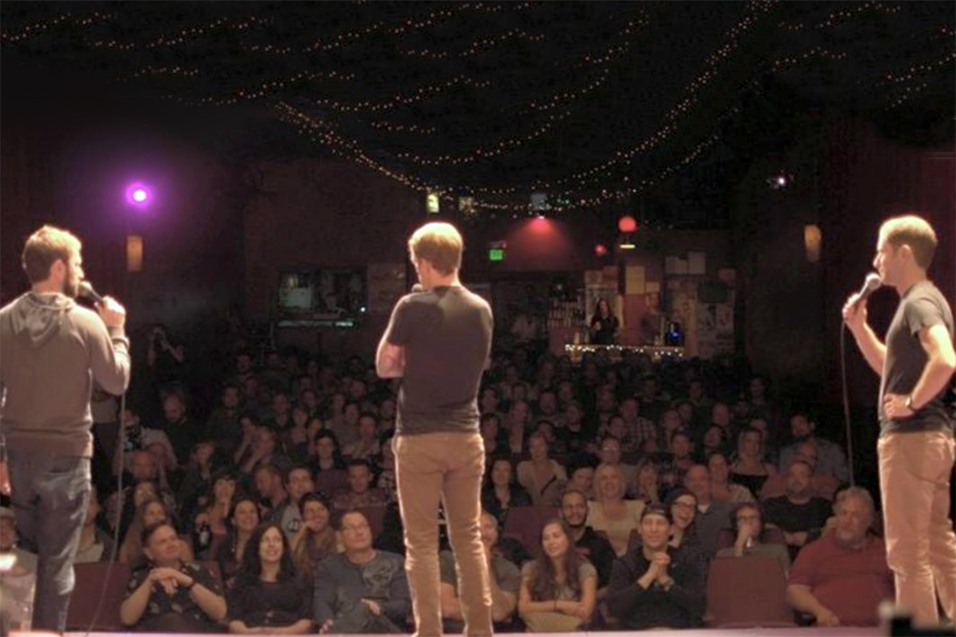
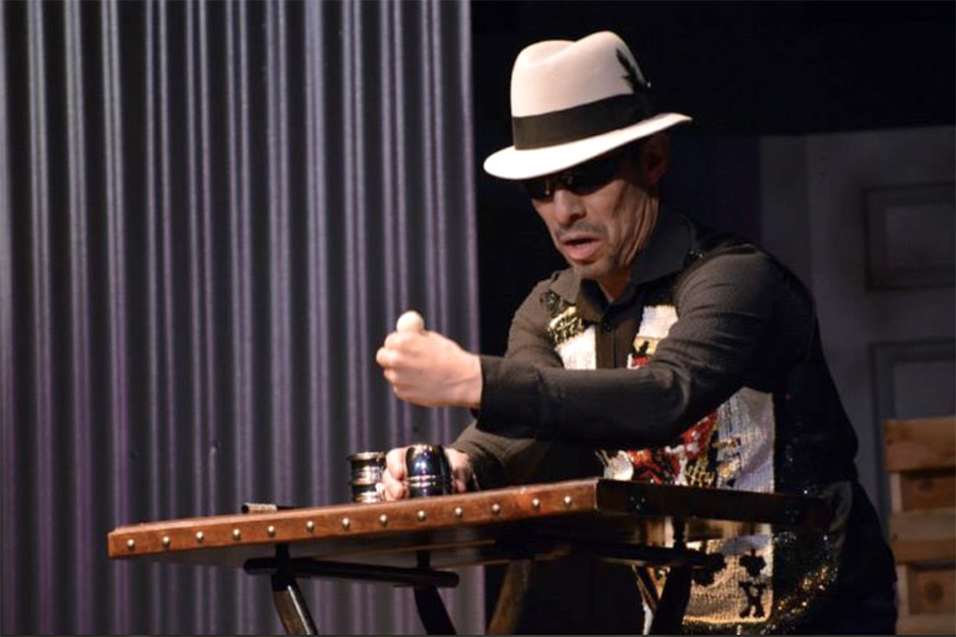
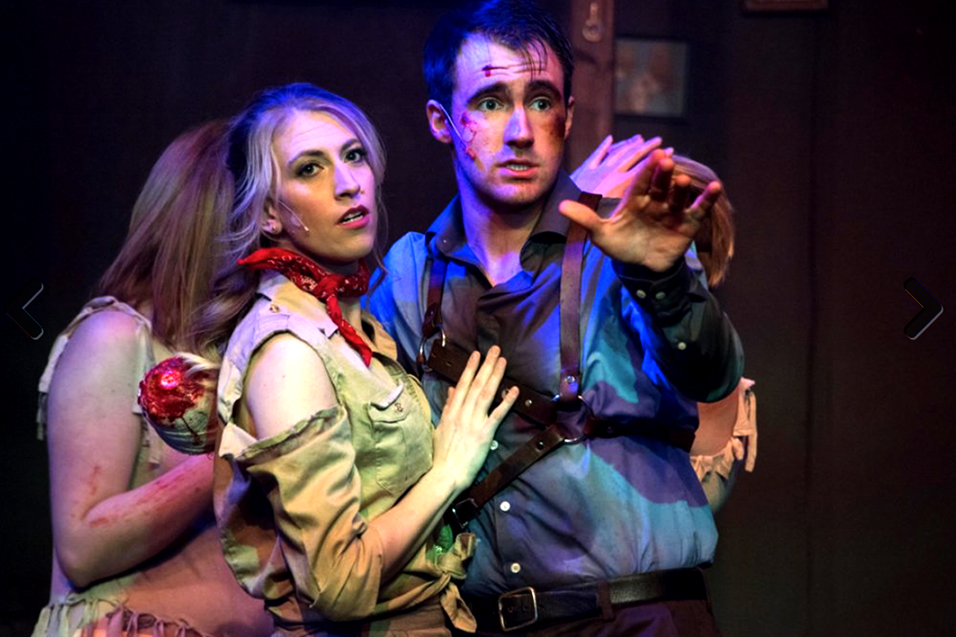
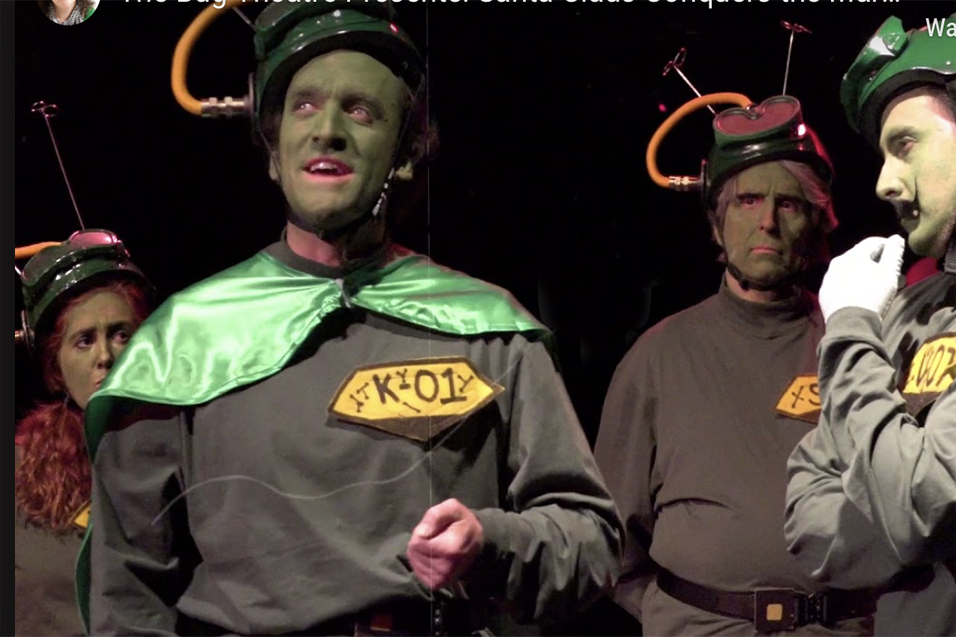
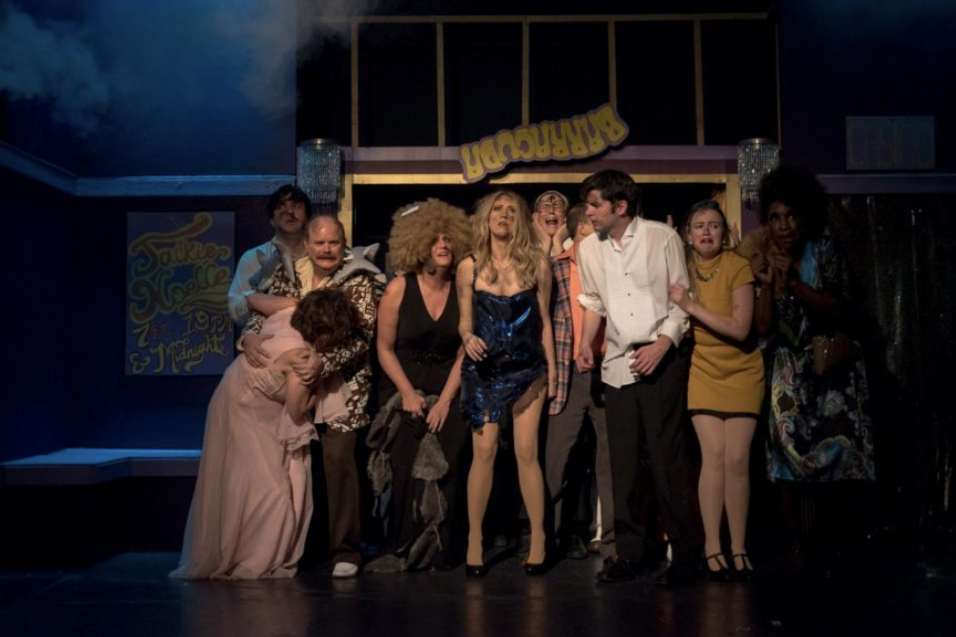

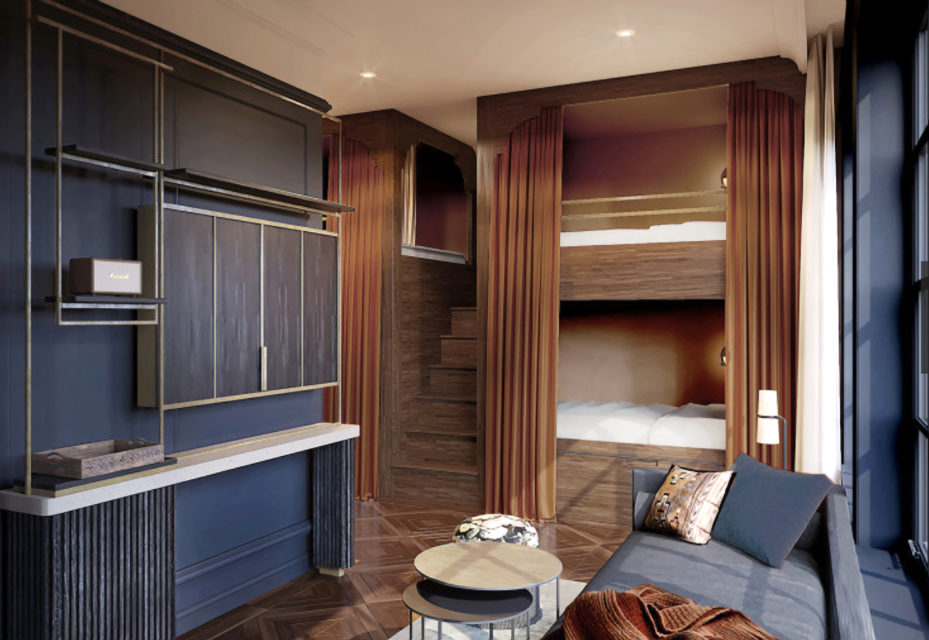

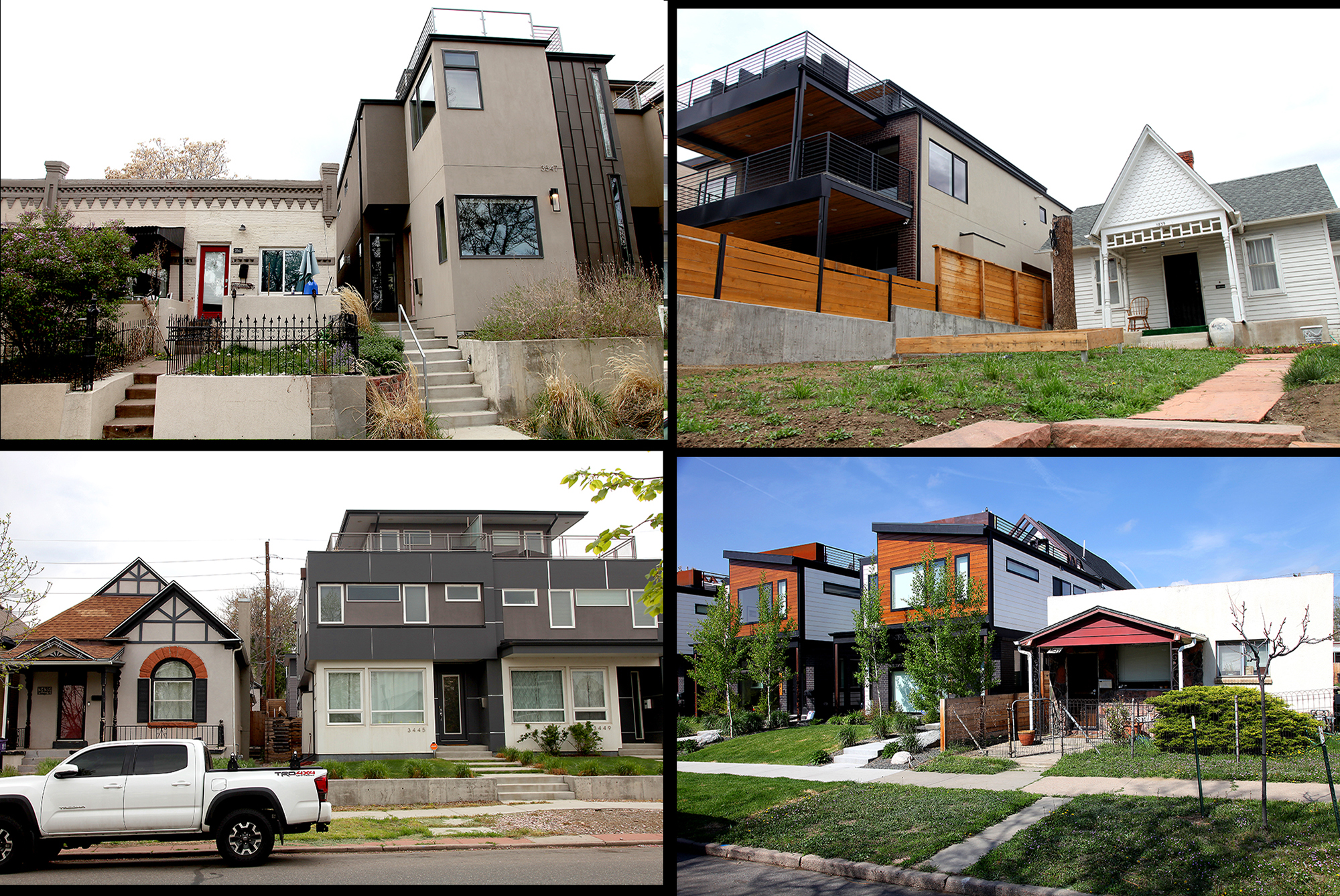
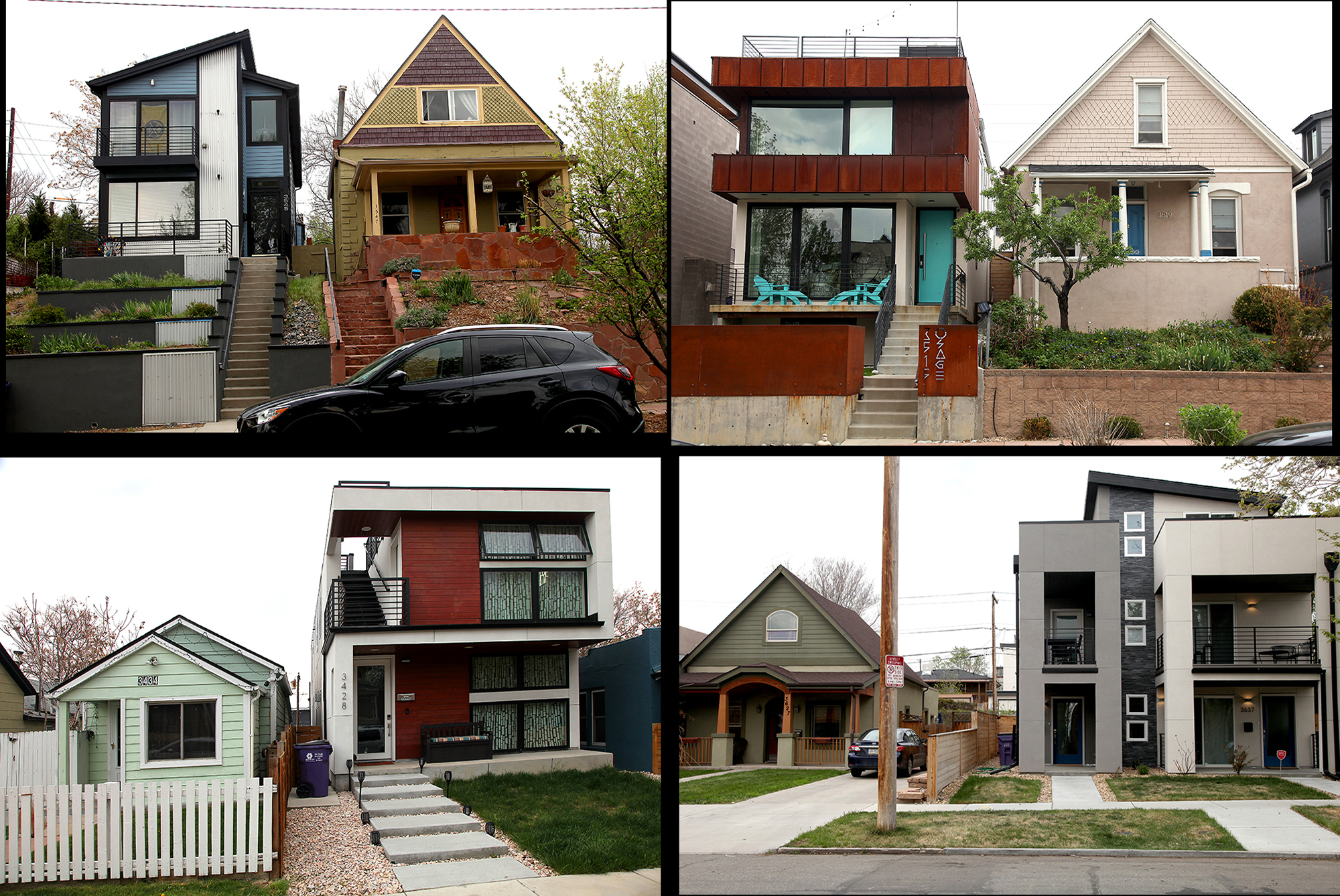

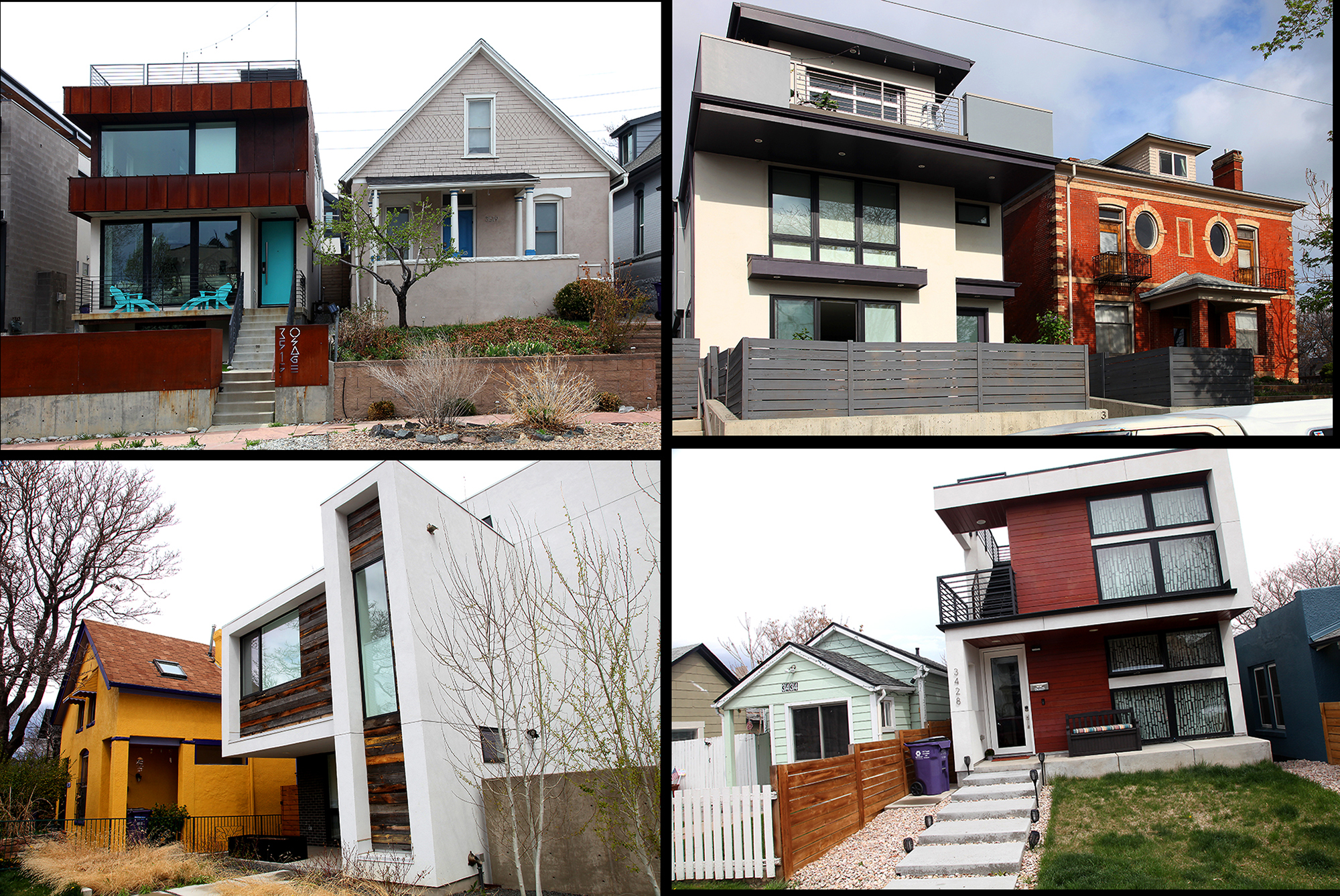
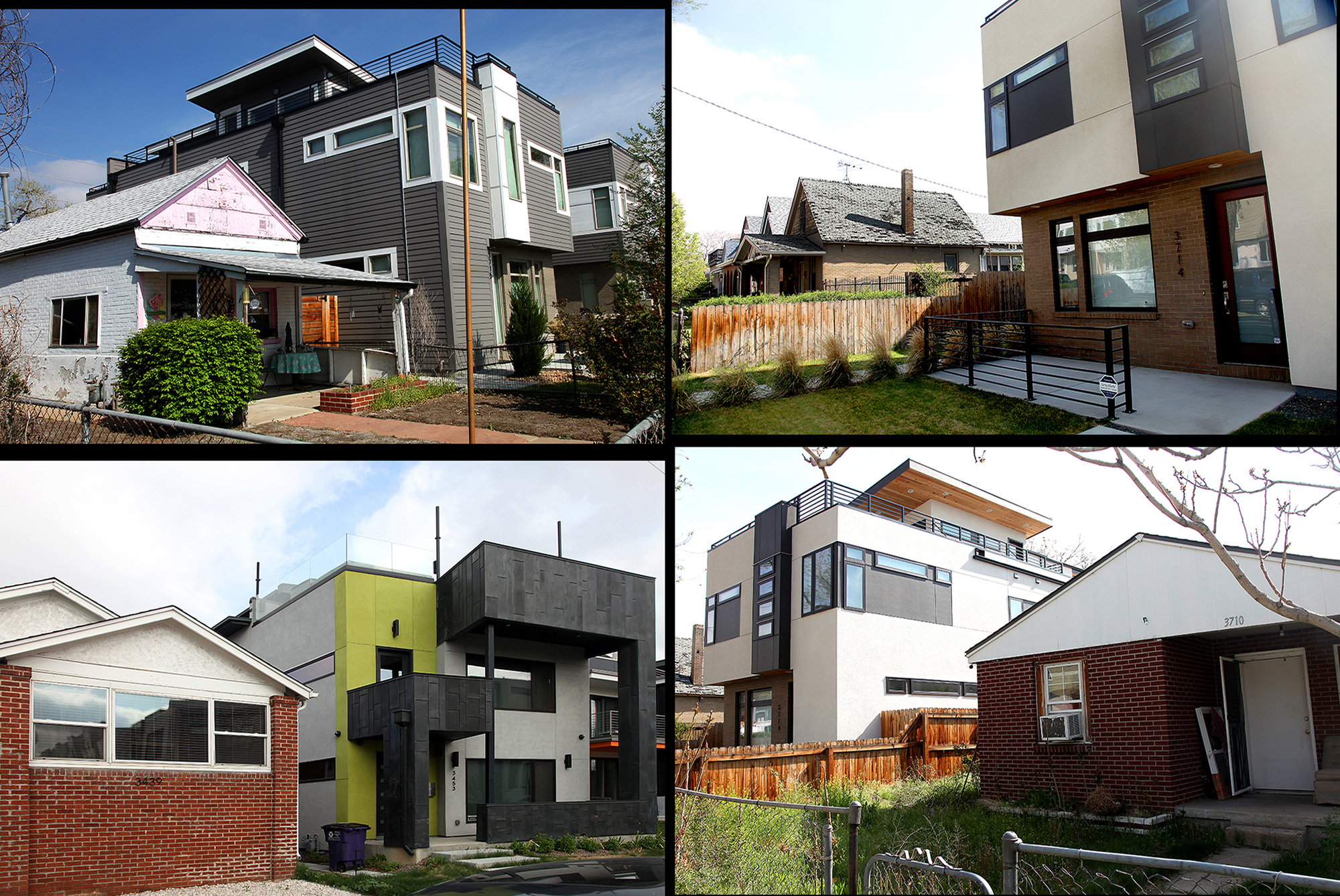
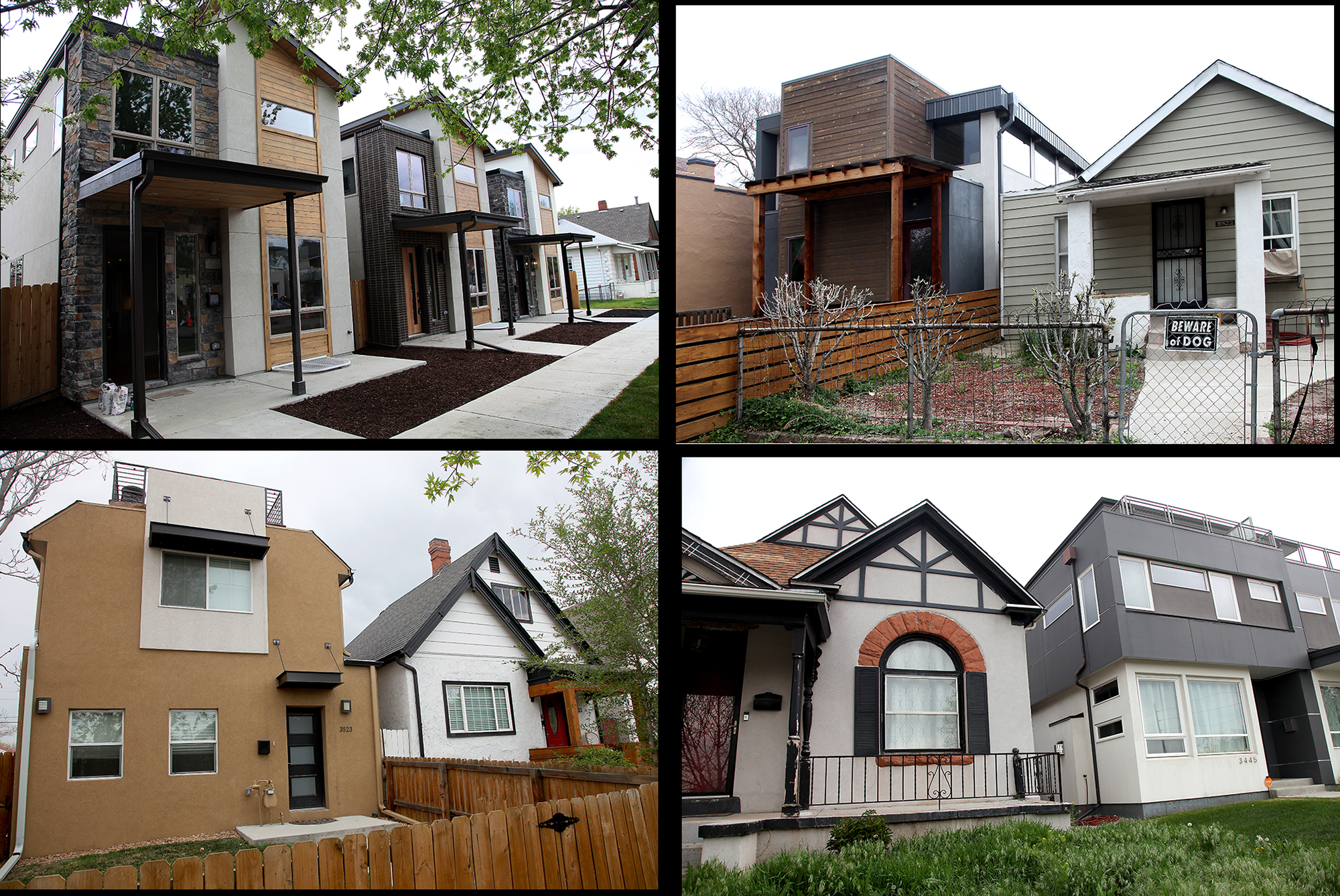
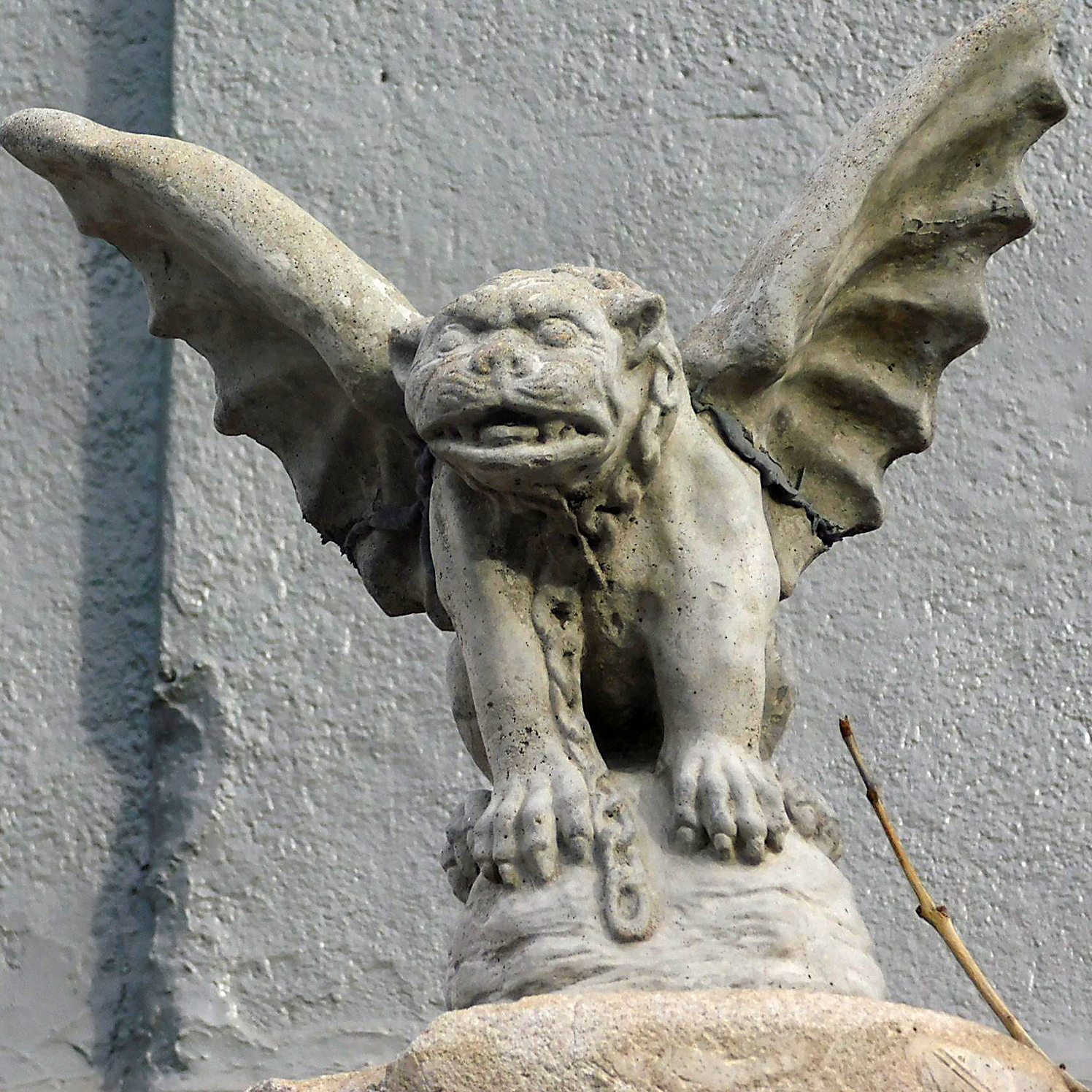
Gregory Everson
Excellent BLOG, interesting and fun and educational. Enjoyed reading through all the commentary – a very rich history.
Deb
Ah, Pagliacci’s, the site of many a family dinner in my household growing up and several high school and college dates. It was family run by several generations and finally sold when the kids got over it. The served a big pot of minestrone soup on every table along with salad which was included in every meal.
Arlette Steinberger
Can’t wait for the next chapter
Patricia Martin
The photography is absolutely stunning. It brings the stories to life and illuminates the incredible changes these neighborhoods have experienced.
Scott Scheuermann
Such a rich history, thank you for taking the time to do this!
Olaf
What a pleasure to read. So good – John, you are a true artist. Thank you for this most-riveting history lesson. I’m crying myself to sleep tonight knowing that I missed out on the Mudmen.
amyleesolomon
Thanks so much for the history. My place is directly across from Our Lady of Mount Carmel and it has broken my heart to witness this transformation. We always bemoaned the fact that we didn’t have a groovy coffee shop on the block, but now we have that and a whole lot more. I miss the galleries, first Friday and general mayhem of back in the day.
Michael Holtby
I spent time in Papua New Guinea with the authentic mud men. The background was they were chased from their land by a larger tribe. All the tribes were very superstitious so the mud men made their costumes and creeped out at dusk, scaring the invading tribe off their land. Here is a short video of what they were like: https://vimeo.com/137431107
Dominique Hershberger
Such an interesting read and such interesting history! Thank you John!
Sharon and Rex Brown
Love these, John
Pingback: Stories from the Hood, Part One – The Olden Days – John Bonath Fine Art Photography